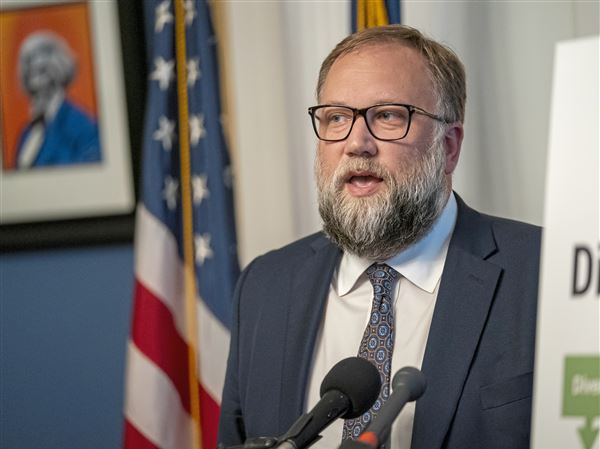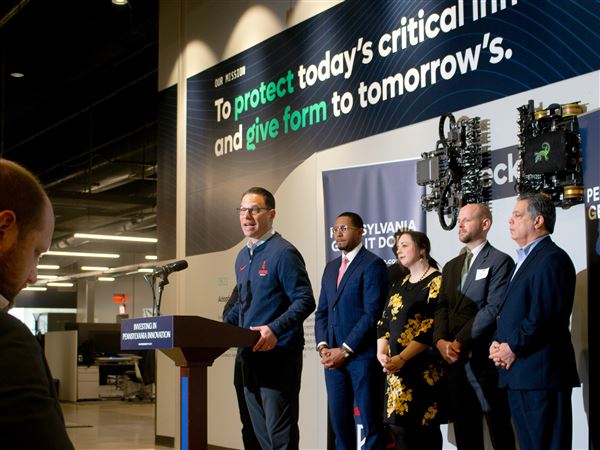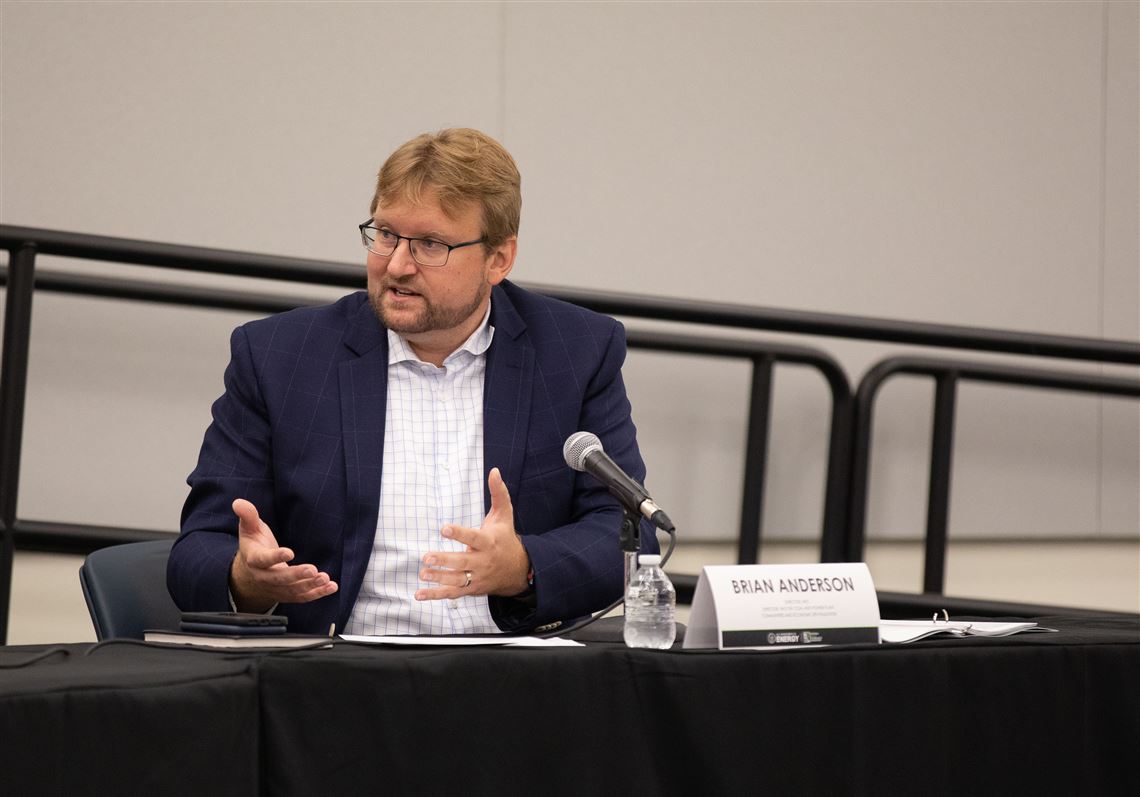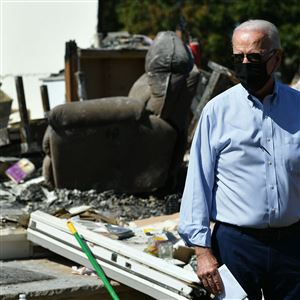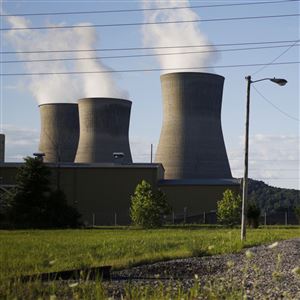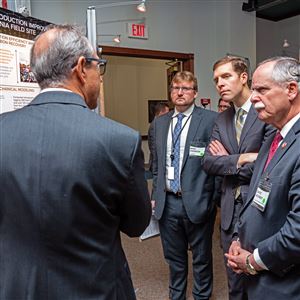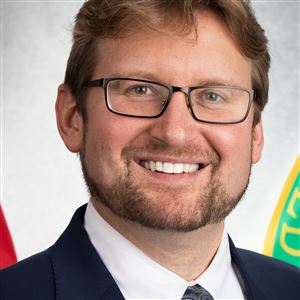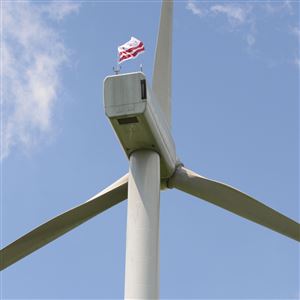WASHINGTON — Brian Anderson grew up in West Virginia, seeing the coal industry slowly decline to the point of utter collapse in recent years.
Now, Mr. Anderson, a veteran energy scientist who since 2018 has served as director of the National Energy Technology Laboratory, has an opportunity to do something to help towns like his. In April, Mr. Anderson was tapped by President Joe Biden to lead national efforts to revitalize coal-dependent communities.
The mission came with inherent challenges beyond his scientific background. Mr. Anderson, long a proponent of carbon capture technology and a fierce believer in his scientists’ work at lab facilities in South Park and Morgantown, W.Va., stepped into a role with weighty political objectives.
He was tasked with coordinating a group — which includes most of the White House Cabinet, as well as leaders of the U.S. Environmental Protection Agency, the Office of Management and Budget, and the Appalachian Regional Commission — to develop technology and economic programs that can sustain both clean industry and good-paying jobs.
It’s a core tenet of Mr. Biden’s agenda, but a question that’s difficult to answer: Can new technology and federal dollars save coal country — and will it arrive in time to help laid off miners today?
Mr. Anderson believes it can.
Emissions technologies like carbon capture, which can remove carbon emissions from power plants fueled by coal and natural gas, can clean up steel, cement, agriculture and other industries.
At the same time, he wants to invest in the innovation that can scale up new sources of energy, like wind, solar, hydrogen and geothermal, while providing sustainable work.
“This is really the convergence of trying to find solutions — technical solutions on one hand, and then societal and economic solutions on the other,” Mr. Anderson said in an interview last week.
“What’s really exciting is, here, I have 11 Cabinet secretaries who are all committed to an energy transition but in a way that doesn’t leave people behind,” he said.
“Putting it all together really taps into my analytical scientific mind,” he said, adding, “honestly, I can say there’s not a whole lot of politics in what we’re doing.”
Mr. Anderson — whose official title is executive director of the White House Interagency Working Group on Coal and Power Plant Communities and Economic Revitalization — said his first four months on the job have been informative.
In its initial report in April, the group identified 25 “priority communities,” geographic areas across the country that have already seen economic dislocation and job losses. The areas included much of West Virginia and eight counties in the Pittsburgh region.
Some places have built programs to get ahead of anticipated layoffs. In Colorado, a state-level Office of Just Transition is coordinating with an electric utility, for example, to ensure no jobs are lost from a planned power plant shutdown in 2026.
Mr. Anderson acknowledged that the economic future in places like West Virginia and Pennsylvania’s Greene County were “a little cloudier.”
“The path forward is not as clearly laid out,” he said.
Mr. Anderson is no stranger to the economic uncertainty in such communities with the boom and bust of fossil fuels.
His father worked in oil and gas and his grandfather worked in coal and suffered from black lung disease, which has made a shocking resurgence in recent years despite worker safety protocols and modern equipment.
“My own personal history is colored by the devastating impact mine closures can have, when the communities themselves lack the economic diversification,” Mr. Anderson said.
Mr. Anderson earned his bachelor’s degree in chemical engineering from West Virginia University and a master’s degree and Ph.D. in chemical engineering from the Massachusetts Institute of Technology. He started as a professor at WVU in 2006 and, in 2014, founded and built the WVU Energy Institute, a research group devoted to developing next-generation energy tech.
Mr. Anderson was a natural fit for the White House role.
The Biden administration has pressed an environmental agenda that will make the power sector net-zero greenhouse gas emissions by 2035 — without explicitly banning fossil fuels anytime soon. Mr. Anderson, whose lab focuses on fossil fuel technology, believes major federal investment is key to engineering future jobs.
In April, the working group announced $109 million in funding for research of carbon capture, mineral extraction and geothermal technology.
Last month, the U.S. Economic Development Administration announced $300 million would go to coal-dependent communities, part of $3 billion in total economic development funding included in the American Rescue Plan, the $1.9 trillion COVID-19 relief package passed by Congress in March.
Mr. Anderson could see a lot more federal support for his goals. Momentum is building in Congress toward a $1 trillion bipartisan infrastructure bill passed by the Senate this month, and the House plans to take it up in September.
The bill includes $937 million for large-scale carbon capture pilot projects over four years and $2.56 billion for demonstration projects over the same time period.
It includes $73 billion under the category of grid modernization and $7.5 billion to build electric vehicle chargers.
As expansive as the working group is, Mr. Anderson’s most powerful ally may be outside the White House: fellow West Virginian Sen. Joe Manchin, a key Democrat in the upper chamber and chair of the Senate Energy and Natural Resources Committee.
Mr. Manchin was part of the core group of lawmakers pressing for a bipartisan deal and advanced a nearly $100 billion bill on energy infrastructure last month.
And Mr. Manchin’s wife, Gayle Manchin, was named in May as a federal co-chair of the Appalachian Regional Commission, further bringing West Virginia’s needs to the table in Washington.
The commission, a federal-state partnership established by Congress in 1965, awards economic development grants to serve communities throughout Appalachia.
It has a special focus on coal-dependent areas, doling out money in recent years for people to run their own business and learn skills in farming, coding, aviation and the hospitality industry.
In June, Mr. Manchin joined Mr. Biden’s energy secretary, Jennifer Granholm, in touring the NETL’s Morgantown facility with Mr. Anderson. And on Aug. 11, Mr. Anderson welcomed the deputy secretary of commerce and local officials to a roundtable discussion at Waynesburg University in Greene County.
Mr. Anderson said a large part of his job so far has been ensuring communities are connected directly to the lines of federal funding. He’s seen a “groundswell of excitement” around the initiative and the dollars put behind it.
Measuring success — with a mix of economic statistics, technological advancement and general standard of living — may prove tricky. But Mr. Anderson said the group is on the right path.
“It’s immeasurable how much it means to me to see if we can make a difference in people’s lives, just giving them hope and the ability to chart their own path,” Mr. Anderson said.
Daniel Moore: dmoore@post-gazette.com, Twitter @PGdanielmoore
First Published: August 22, 2021, 4:15 a.m.
Updated: August 23, 2021, 12:05 p.m.



